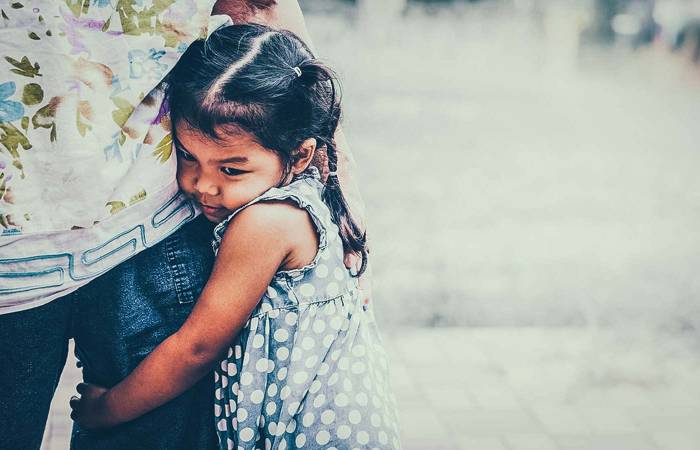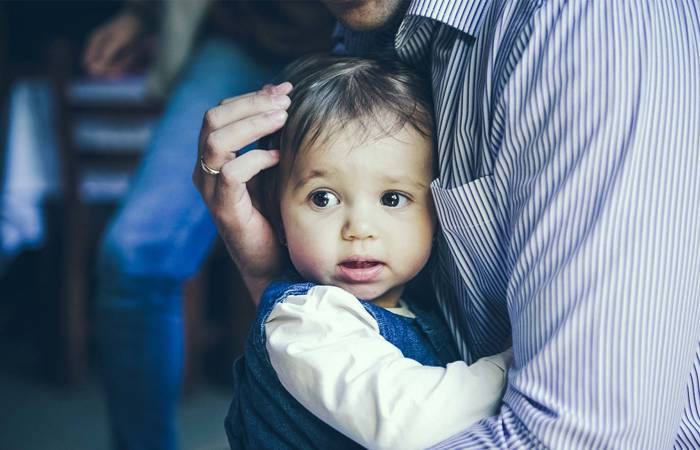Like what you see?
Sign up to receive more free parenting advice.
Thank you for subscribing to our newsletter!
Child Development
In difficult times we all feel stress and anxiety, including our children. Speaker, author and academic Dr Michael Nagel helps explain the impact of stress on children and how to manage it.
One of the most troubling trends we are seeing in many western countries is a growing number of anxious children.
Anxiety, in itself is linked to stress and stress is a very difficult concept to define given the broad array of individual factors that can create stress. What is well known, however, is that stress is incredibly detrimental to the brain and healthy development.
Understanding the chemical reactions
In itself, stress is an adaptive response initiated by the emotional centre of the brain. This response happens when we feel threatened resulting in a myriad of chemical reactions, usually in the form of stress hormones, preparing the body to fight or flee from the threat.
These chemical reactions are helpful in genuine threatening circumstances but too much stress, or more worryingly a chronic overreaction to stress, overloads the brain with survival chemicals that evolution designed for short-term duty in emergency situations only.
Long term exposure to the cumulative effects of stress hormones has been shown to contribute to anxiety disorders and even damage parts of the brain and kill certain brain cells. The day-to-day realities of life can evolve into stressors resulting in the brain activating the very stress response designed to protect itself.
The impact of stress on children
Because the brain continues to mature throughout childhood, children may be more vulnerable than adults to the impact of stress. A child’s brain is still developing and consequently, the developing brain is far more sensitive to the chemical processes associated with stress and initiated in the mind.
There is a large body of research1 that tells us that children who live in chronically stressful environments develop a variety of disorders as they get older.
There is also a growing body of neuro-scientific research telling us that the powerful chemicals designed for our survival in stressful situations can actually impact on the normal growth and development of very important regions of the brain, especially during the early stages of life.
When a situation is interpreted as stressful, it triggers a system in the brain that tells the hypothalamus to release a series of reactions. These reactions, in turn, signal the fight or flight mechanisms of the brain to prepare the body for action.
For example, the skin may constrict to diminish any bleeding in case of injury and there is likely to be an increased flow of oxygen to the muscles requiring the heart and respiratory system to work harder.
Stored carbohydrates in the body are liquidated to provide sufficient fuel for any measure of response while the immune system becomes hyper-vigilant in preparation for whatever part of the body is injured.
The brain also produces an elevation of the hormone cortisol, a powerful chemical designed to shut down thinking and prep us for fighting or running away. All of these actions are part of an evolutionary process designed for short term purposes which is why continuous stress responses and anxious feelings can mean trouble over the long term.
Anxiety is a bit different than stress. While stress is a response to threat, anxiety is a sustained mental health disorder that can be the result of, or triggered by, stress. Stress is a highly individual experience that depends on specific psychological determinants to ignite a stress response.
There is also a growing body of neuro-scientific research telling us that the powerful chemicals designed for our survival in stressful situations can actually impact on the normal growth and development of very important regions of the brain, especially during the early stages of life.Dr Michael Nagel
Stay up to date with the latest news and articles from First Five Years
Thank you for subscribing to our newsletter!
How to manage stress
And while all of that sounds quite daunting, the good news is that there are things we can do to help children and adults alike manage the stress around them.
One of the first things parents can do is recognise that children view stress differently than adults, making communication an important tool for uncovering stress and anxiety.
Children internalise stress differently and remember, stress is in the eye of the beholder. It is important to recognise that children do stress and we do not often see the signs or more worryingly we shrug them off as something ‘they will get over’.
Parents need to talk to children often, and more importantly, listen with intent. Children are not always good at explaining what might be stressing them or making them anxious but body language is a great indicator of internal emotional states…negative facial mannerisms, lethargy, anxiety, fear, prolonged sadness or depression are tell-tale signs of stress or emerging anxiety related issues.
When the signs appear you need to reassure children that everything is okay, they are loved and sometimes bad things happen, but we can get over them.
Second, do not pass on your stress to your children. Children are very perceptive and if they see stressed adults this can create anxiety and stress in them. It is important for adults to be mindful of their own stress, take steps to diminish it and by all means avoid displaying it.
Most children also learn how to deal with stress from following the examples their parents and other role models display. Decades of social learning theory reminds us that children will often mimic the behaviour of the adults around them.
Importantly, children can also learn how emotions work, emotional literacy as it is now called, and how to diminish negative feelings. In other words, if a child appears stressed or anxious then that can also be a teachable moment.
Finally, some of the simplest ways to counteract stress include physical activity and regular exercise, healthy eating, plenty of sleep and fostering positive social relationships.
Couple those simple remedies with an environment that is safe, secure, respectful and loving and the powerful hormones involved with stress are less likely to be anything more than a minor discomfort.
When children feel that they have a sense of control in an environment that is stable and predictable they are in a better position to counteract any perceived threats.
This is also a reminder that environments that foster healthy social and emotional development are not only precursors for children to achieve and succeed but assist in developing a framework for a life devoid of serious physical and mental illness.
In this sense, parents should do everything possible to present a calm demeanour and ensure that children feel safe, secure, loved and able to get help when they need it.
1 National Scientific Council on the Developing Child. (2005/2014). Excessive Stress Disrupts the Architecture of the Developing Brain: Working Paper 3. Updated Edition. http://www.developingchild.harvard.edu
Parenting through Covid-19
The key for parents is to limit anxiety and stress in their children. Here are two keys to helping your children:
Make sure your home feels safe!
- Be predictable and consistent
- Be nurturing and affectionate
- Try as hard as possible to not change your behaviours
- Listen carefully and be responsive in a positive way
- Model a calm demeanour
Limit exposure to the news!
- Limit access to what may feel scary and confusing…the news is often both for children given their young minds.
- Remain calm while explaining and answering questions
- Remind your children that this situation will pass and things will get better
For children and adults alike anxiety is heightened when things are Novel, Unpredictable, Threatening and out of our Sense of control (N.U.T.S). Ensure the home environment diminishes those symptoms and stressful times can be managed positively.

Dr Michael Nagel
Associate Professor, School of Education, University of the Sunshine Coast
See more







